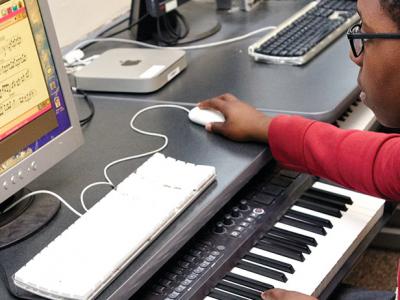What does a Virtual Reality Content Creator do?
Virtual reality (VR) is an exciting new medium with broad applications in entertainment, marketing, design, and more. Every bit as flexible and dynamic are the professionals who specialize in creating and adapting content for virtual reality. VR content creators use two main methods to create VR content: computer-generation, wherein every part of the world is synthetic, designed and integrated into an interactive experience using code; and 360-degree video, where video is taken using an omnidirectional camera and edited to create an immersive experience.
360-Degree Immersive Video
By far the least expensive and speediest method of creating virtual reality content is 360-degree video. Of course, that doesn't mean it's easy or cheap: video is shot using an omnidirectional camera, spliced together using special video stitching software, and edited further in order to be optimized for viewing on a head-mounted display (HMD). Frequently, content creators will fill more than one role on a single project, but VR content creators who work in this medium can take on a number of jobs, including:
- direction—conceiving and leading the project;
- filming—setting up tripods, guiding the Steadicam, or piloting a drone-mounted camera;
- audio capture—setting up lavalier mics or even sitting directly beneath the tripod; and
- postproduction.
As far as the projects themselves, 360-degree video can support fictional narratives and nonfiction documentaries, just like traditional video, but it's particularly effective when it comes to marketing and event management. The ability to live broadcast VR content allows sports games, concerts, conferences, and trade-shows to become immersive experiences for audiences at home, while brands take advantage of the eye-catching medium to capture viewers on sites such as Facebook and Youtube. Video-based VR also has cutting-edge applications in fields such as tourism, real estate, education, and surveillance—military and otherwise.
Interactive 3D Development
The "virtual" in virtual reality is why most people tend to picture this kind of content when they think of putting on a VR headset. If creating video-based VR content is like making a film, then creating interactive VR content is like developing a video game. Creators use 3D game development software—called "engines"—to build entire worlds from the ground up. This often means creating original 3D models and animations with software such as 3DS Max or Maya; using applications such as Photoshop or Zbrush to add color and texture; using the engine's built-in tools to add lighting to the scene; and designing original sound effects(Opens in a new window) to bring the visual content to life. Perhaps most importantly, interactive VR content creators write code—using the advanced functionality provided by the game engine—to tie everything together.
While this method of creating VR content is much more expensive and time-consuming than shooting 360-degree video, it has the advantage of interactivity—thanks to the code—meaning that users can do much more than just look around. The ability to pick things up, move around, and edit virtual objects in an immersive environment makes interactive VR excellent for computer-aided design (CAD) as well as video game-style entertainment. Autodesk’s VRED, for example, is a virtual prototyping software for automotive designers that allows them to see and edit their designs at scale without needing to build a model.
At a Glance
If you imagine the field of VR content creation as a river, it is one with two separate channels: that of 3D interactive development, and that of 360-degree video. Entry-level VR content creators—who often come from careers as developers or filmmakers—specialize in one route or the other almost without exception, and continue to do so after being promoted to audio director, head of 3D art, or principal director. It's only much later in the career, at the highest levels, that these two branches finally flow together. Someone who's responsible for running an XR company or overseeing the content programming of a new VR device must intimately understand both processes; only by understanding their distinct workflows and needs could a high-level producer or manager make accurate budget and timeline assessements. Add experience with complementary media like AR and MR, and you have a true virtual reality maven. Those who make it this far can leverage their superior and in-demand knowledge-base to take their pick of positions at major VR companies, work as interactive media specialists, or chart their own course as VR entrepreneurs.
The most common employment opportunity for virtual reality content creators is in Extended Reality (XR) companies—"XR" being the umbrella term for Virtual Reality (VR), Augmented Reality (AR), and Mixed Reality (MR). XR companies tend to take on a variety of contracts from the entertainment, advertising, and nonprofit sectors, and may also participate in startup-style software development. In addition, many VR content creators work full-time for video game developers, film studios, advertising companies, museums, and VR hardware manufacturers like Oculus or Magic Leap.
There is also a growing market for freelance VR content creators, who work wherever and whenever they want, designing their own “assets”—3D models, animations, effects, and more—to be rented or sold on online marketplaces. Rarely, freelance VR content creators will even create their own standalone VR experiences to be distributed online or sold to a hardware manufacturer and packaged with a new headset.
360-Degree Video
- Storyboarding a VR film experience
- Setting up and positioning tripods, Steadicams, and drones for solid takes
- Attaching and positioning lavalier microphones for quality audio
- Working with actors and subjects to get strong takes
- Video stitching (Adobe Premiere, Adobe After Effects, Final Cut Pro, Mistika VR, Mocha, or Nuke)
- Sound-video sync
- Editing 360-degree video
3D Interactive Development
- Building scenes and adding lighting with Unity or Unreal Engine's world editor
- 3D modeling and/or animation in 3DS Max/Maya/Blender
- Photoshop, Zbrush/Mudbox, and Substance Painter and/or Substance Designer
- Ability to write clean and well documented code in C#, C/C++, JavaScript, Python, Objective C, and/or Swift
- Knowledge of Object-Oriented Programming (OOP) design patterns
- Knowledge of Agile development methodologies like Scrum, Lean, Kanban, and TDD
- Experience developing for multiple target platforms
- Solid understanding of bug tracking and version control tools
Other Skills
- ARKit and/or ARCORE
- Motion capture
- UI design
- Game design
Most VR content creators work in a collaborative office environment. Those who work with video may travel for shoots and spend significant chunks of time in the field. Similarly, 3D development professionals may attend voice recording sessions and participate in motion capture shoots.






